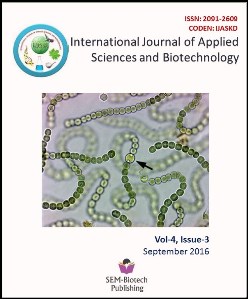Western Blot Method Evaluation for Detection of Helicobacter pylori Infections against H. pylori Ag in Stool Enzyme-Linked Immunoassay in Adult Egyptian Patients
DOI:
https://doi.org/10.3126/ijasbt.v4i3.15769Keywords:
H. pylori, Western blot, cytotoxin-associated gene A, vacuolating cytotoxin A, EgyptAbstract
Helicobacter pylori infection is tremendous medical burden especially in developing countries. Various immunological tests are available for diagnosis of H. pylori infection. Western blot method is proven to be promising for Precise, easy reading, sensitive and specific detection of H. pylori infections, besides it also permits the detection for the different virulence factors of CagA / VacA positive strains (type I). The objective of this study is to evaluate the diagnostic value of commercial Western Blot (WB) method in the serological diagnosis of H. pylori infections against the H. pylori Ag in stool (HpSAg) using commercial enzyme-linked immunoassay (ELISA) in adult dyspeptic Egyptian patients. Also we investigated the prevalence of virulence factors, cytotoxin-associated gene A (CagA) and vacuolating cytotoxin A (VacA) in the infected patients. Samples from 46 adult dyspeptic Egyptian patients were tested by the two methods. WB test gave accurate confirmed result with (82.6% accuracy and 89.5% sensitivity) compared to HpSAg test. Also the results indicated a high seroprevalence of cagA- and vacA-positive virulent H. pylori type I strains in adult infected population indicate that such strains may be common in this population and responsible for the majority of H. pylori infection among adult Egyptians. We concluded that WB method could be useful for the confirmatory detection of antibody profiles to H. pylori antigens and virulence factors in adult Egyptian patients.
Int J Appl Sci Biotechnol, Vol 4(3): 352-358




